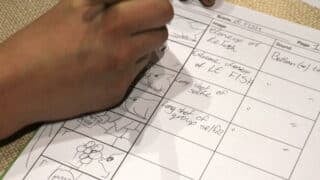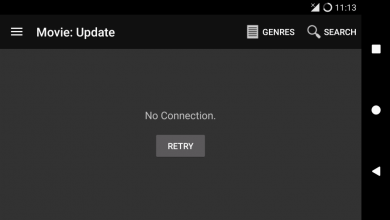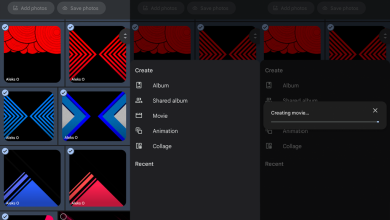How to Make a Movie – Learn About Film


what you need | step by step | narration
How do you get started in filmmaking and make short films or videos that people want to see? you need:
- choose the right equipment
- learn how movies tell stories
- develop the story idea
- plan shots and sound
- shoot and edit the movie carefully
- get feedback before you finish
- share it in the proper format
Tip: Before you start a big film project, make some simple short films to develop your skills. so if you are planning to make a documentary, make a mini-documentary to practice. if you’re planning a drama, try to shoot just one scene.
want to get started quickly? read my 10 tips for beginning filmmakers.
Do you want to know more? my 163-page illustrated guide to start making movies explains the filmmaking process, what you need, and how to use images and sound to tell your story.
get the right gear
you need a camera to shoot your movie. you could use an iphone or a camcorder. but a mirrorless camera like the panasonic g85 or the fujifilm x-t3 has more creative potential. a microphone will help you get better sound, and a tripod or stabilizer will keep the camera steady. you may need lights or reflectors.
you will need an application or an editing program. imovie and adobe rush are easy to use; Final Cut Pro X and Adobe Premiere Pro are more advanced and powerful. if you’re shooting on a smartphone, you can edit on the phone or tablet, but it’s easier on a computer.
here is my list of what you need to get started. It is not necessary to buy everything: it is best to rent or borrow what you are not going to use regularly.
learn how movies tell stories

cinematic language refers to the way images, sound and editing help tell the story. you need to know when to use a close-up and when to use a wide shot. you can use the lens, camera angle, light and sound to create a mood.
It’s important that your shots look good when you edit them together. the continuity system can help. it is a set of rules for where to place the camera and how to frame the shots. it will make your movie easier to understand and better to watch.
develop your idea
First, decide what kind of movie you want to make and why you’re going to make it. Is it a drama, a campaign video, a documentary or a music video?
Keep the story or idea simple and make sure people can understand it. can you describe it in 50 words or a tweet? if it can’t, it should be clearer.
plan how you will tell the story. be careful to rely on a clever twist – your movie needs to be interesting throughout. make sure you grab people’s attention early on, and then give them a reason to keep watching until the end.
You could follow a standard three-act structure. a montage introduces the characters and the setting. in the confrontation they solve the challenges and a resolution concludes them.
If you need inspiration, I’ve collected some great movies and ideas here. and this page has short film story ideas and tips.
Be realistic. Don’t worry if you can’t afford a lot of characters or an expensive location. instead, treat limitations as a challenge.
Keep your movie short. You can make a one-minute movie in a few days. a ten minute movie will take weeks. And the longer the movie, the harder it will be to keep people’s attention until the end.
plan your movie

The process of making movies has three main stages: pre-production (planning), production (shooting), and post-production (editing and sharing).
Pre-production is the planning stage, where you work out your film in detail. you need to plan what you are going to shoot, how you will do it and what you will need for the shoot. planning may seem boring if you want to go straight to filming, but it will save time in the long run.
There are several ways to plan. You can develop ideas using a mind map or idea board. then you can write a script and draw storyboards or make shot lists. go to this page to see my movie planning templates.
Choose actors or hosts/interviewers carefully. so for a serious movie, don’t trust using your friends unless you’re sure they can act. listen to them before committing to use them.
Theater students can be good, affordable actors. but if they’ve only performed on stage, they’ll need to tone it down for the camera. that means speaking more naturally and using smaller gestures. they should keep their eye line close to the camera without looking into the lens.
Review the locations where you plan to shoot. make sure you can get the permit and find out if you will have to pay. is the location secure? Will there be interruptions?
Some filmmakers shoot “guerrilla style,” shooting on location without permits or authorizations. this is risky as you could be arrested or fined. and it may not be necessary: some cities will allow small crews or students to film on the street for free as long as they are told in advance.
Plan your movie as a series of separate shots. you’ll probably need between twenty and forty separate takes for a one-minute movie.
don’t forget the sound. you have to consider it from the beginning. good sound can make an average movie great; bad sound can make it unwatchable. so if you don’t have the right gear to get good live sound, make a movie that doesn’t need it. edit music or a voiceover, or add sound effects. but be careful not to use copyrighted music without permission.
When you’re ready to shoot, you want to make sure you have everything you need that day. you can use a shooting schedule and call sheets to plan this.
record your movie

production is the filming stage.
Work as a team if you can. you can shoot with one hand, but it’s easier with other people. In a three-person crew, the director has overall control and works with the actors or presenters. a camera operator films the shots. the sound recorder configures the microphones and verifies the audio.
The filming stage is much easier if you planned it in advance. make sure your actors learn your lines and work with them to “lock” the scene. that means planning where they’ll stand and move, and how the cameras will capture their performance.
If you need to shoot dramatic scenes with a single camera, you can do so by shooting the action multiple times.
 First, film a master shot of the whole scene all the way through.
First, film a master shot of the whole scene all the way through.
 Then reposition the camera to frame a closeup of one actor. Film the scene again.
Then reposition the camera to frame a closeup of one actor. Film the scene again.
 Now film the scene a third time, framing the second actor. When you edit the movie, you can start with the master shot then cut back and forth between the closeups.
Now film the scene a third time, framing the second actor. When you edit the movie, you can start with the master shot then cut back and forth between the closeups.
Before you start recording, check that the camera settings are correct. check framing, light, sound, and focus. use a microphone and listen to the sound with headphones, if possible.
records each shot for longer than necessary (ten seconds before and after any action). if you are working in a team, you can follow the shooting drill on this page. keep the camera still or move it smoothly and steadily: don’t pan or scan.
check your shots before leaving the spot if you can.
edit and share

Post-production is where you decide what footage to include in your film. then you edit it, add sounds and effects, and get it ready to share. be sure to allow enough time for this stage.
Before you begin, prepare to save and back up your work. then review what you have filmed and choose the things you are going to use. you could make a paper edition, preparing the edition in advance. this can be particularly useful for documentaries.
Open your application or editing program and create a new project. then browse or import your clips. if you have a lot of material, you should organize it into separate folders or “events”. if your movie is complex, break it into separate sequences and then combine them at the end. this is easier to handle with professional editing programs.
start editing by putting together a preliminary montage. choose roughly the parts you need from each clip and add them to the timeline in order. then check the order and see if the movie makes sense. change the order and add or remove shots, if necessary. remember that it is the finished film that matters, not the individual shots. so you should be ready to get rid of your favorite shot if it doesn’t fit the movie.
When the order looks good, adjust each individual edit so the sequence flows smoothly. then add sound effects, voiceovers, and music, and adjust audio levels. with professional programs, you can also correct colors. then you can add effects and titles.
Before you finish editing your movie, show it to other people and see what they think.
- does it make sense? Is the story clear?
- Is it timing right: is it the right length and is the pacing consistent?
- how about the audio: can you hear all the dialogue?
- finally, does it feel good? Is there something that feels strange or wrong and what can you do to improve it?
Make sure to save your movie and make a backup. then export or “share” a copy at the highest quality your program allows. (you can always make a lower quality copy from a high quality copy). finally, make copies in the format you need to distribute your film. if it’s for online use, check the specs with your host or streaming service. if you’re not sure which format to use, choose mp4 – it’s compatible with most phones and computers.
how i made a one minute short film


